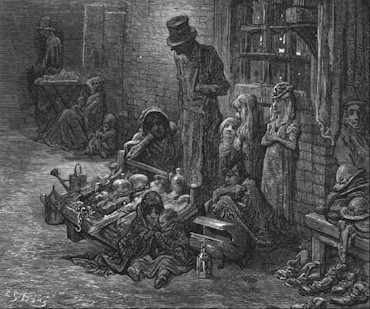|
The Parish of St. Giles

The bells of St. Giles-in-the-Fields, according to a church report, 'are in very fair condition, and, inspite of their
great age, work very well'. They are three hundred years old, and yet are still heard every Thursday lunchtime. But the history
of this London parish stretches back much further.
In familiar and almost characteristic fashion, there was a Saxon church on the site of the present St. Giles. Drury Lane,
once known as 'via de Aldwych', was the main road leading towards Watling Street from the settlement of Lundenwic, or Covent
Garden; at its northern end was a village cross and a chapel administered by 'John of good memory'. Upon this site in the
first years of the twelfth century, were established a chapel and a hospital for lepers; they were dedicated to St. Giles,
himself the patron saint of lepers. The establishments lay among fields and marshes, their contagion kept apart from the city.
But St. Giles was also the intercessionary saint for beggars and cripples, for those afflicted with misery or those consigned
to loneliness. He himself was lame, but refused to be treated for his disability in order that he might practice self-mortification
all the more fervently.
The innvocation of sorrow and loneliness, first embodied in the twelfth-century foundation, has never entirely left this
area; throughout its history it has been the haunt of the poor and the outcast. Vagrants even now roam its streets and close
to the church there is still a centre for the homeless.
|
 |
|
|
 |
 |
 |
|
"the crossroads between time
and eternity"
Peter Ackroyd says that of
St. Giles in his masterwork
London: The Biography.
The Church which is an
outstandingly beautiful building,
built in the Palladian style
in 1734, is open daily
Monday to Friday for prayer
and to visitors, and
for Sunday Services
from about 1750, the parish
of St. Giles had slowly become a
byword for poverty and
squalor"a
cellar in St. Giles"
typifying the ultimatein
bad
housing. by 1831 the population
of St. Giles well exceeded 30,000 and
'The St. Giles Rookery' opposite
St. Giles Church and between it and
Great Russell Street continued to be
proverbial throughout England as a
resort of beggars and rogues.
the internet's most extensive website
on the life and career of
Victorian England's
most sensational newspaper editor.
|
|
 |
 |
 |
|
|
|

